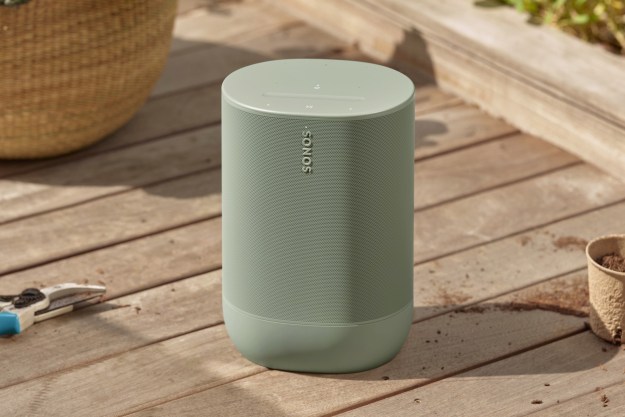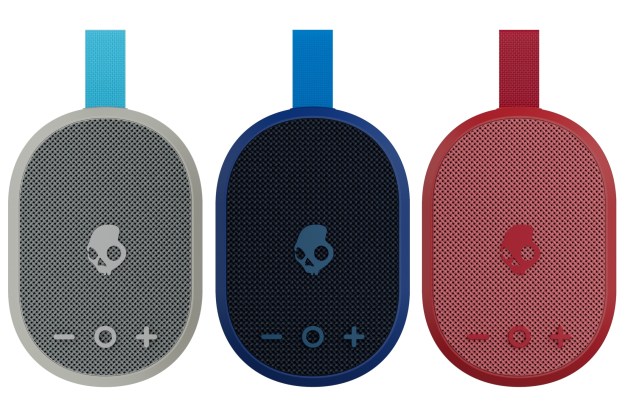Big-venue sound technology comes home to bring 3-D sound to this compact wireless speaker.
Small portable speakers are fast becoming a crowded bunch, and with ‘me too!’ multi-room sound systems coming to market in droves this year, sorting through them is getting increasingly difficult. Mass Fidelity, a startup from Toronto, Canada, figures it can cut through the clutter and by offering a Bluetooth speaker that’s nimble enough to fit in a duffle bag, yet loud enough to keep a dance floor packed and partying.
It’s a familiar refrain from companies looking to stake a claim in the speaker arms race, though Mass Fidelity can brim with a little confidence after a successful Indiegogo crowdfunding campaign landed the startup $1.3 million. Embracing part of where the mass audio market is headed, while carving out its own niche, the Core is a speaker that could straddle the line between enthusiastic music consumers and unapologetic audiophiles.
Big-venue tech comes home
Digital Trends got a firsthand listen to what this little speaker-box-that-could is all about. Upon walking into a room with so-so acoustics and a sparse crowd of early backers and other media, the resonance was palpable. In those initial moments, it wasn’t obvious where the music was coming from. Even more surprising was the size of the Core itself. It’s not tiny, but it’s far from huge. It’s smaller than a Sonos Play:3, but a little bigger than a Play:1.
In fact, Sonos figures prominently here, since it’s considered the perennial benchmark for wireless speakers. Where Sonos uses its own technology for networking and audio fidelity, Mass Fidelity uses Wave Field Synthesis (WFS), a technology that uses computing power to physically distribute audio spatially. It’s not a new form of tech, as it goes back to the late 80s, but it has been so expensive that, until now, it’s been relegated mostly to stadiums, airports and other large venues.
Mass Fidelity co-founder Neil D’Souza likens the Core to the illusion of a live concert hall, where there is audible stereo separation and instruments sound distinct from one another.
“A pair of stereo speakers is essentially also a created sound, so stereo imaging is created by that manufacturer’s definition of what they were going to send to the left speaker and what they were going to send to the right speaker,” explains D’Souza in an interview. “In this situation, you’ve got a box that’s sending out sounds in all directions, creating an image, but not requiring you to sit in that spot to hear the left or right speaker — you hear that image as you move around the room, so it’s less sensitive to where you sit in the room.”
While WFS could theoretically also do surround-sound, D’Souza says that’s still some time away because the computing power and functional programming needed to make it happen wouldn’t yet be possible in something like the Core. The essence of how WFS works and the way the Core was designed inside and out also precludes the company from claiming that it can do 360-degree sound, like others have done. The point here is that the sound isn’t supposed to sound like it’s coming from one specific direction.
He’s not far off based on what I was hearing. The speaker filled a reasonably large room that could fit at least 100 people with ease, and it sounded remarkably clean even from the opposite side of the room. Audiophiles will probably pine for that type of experience, but D’Souza expects casual listeners to open up their senses, too.
The ins and outs
Indeed, much of the Core is designed to cater to that audience anyway. On the back of the unit is a plug for the power supply, USB charging port for mobile devices, auxiliary, optical and control (for home automation) inputs, plus an output for a subwoofer.
At first, it wasn’t obvious where the music was coming from.
The internal battery is rated at about 12 hours of playback, pushing the value proposition of portability the company wants to project. D’Souza figures this is the kind of speaker you can take on a vacation or camping trip.
Under the hood, it has five custom drivers powered by a 120-watt amp and a frequency response that can reportedly go to 44Hz on its own. It has no Wi-Fi capability, relying exclusively on Bluetooth to connect. A part of the top is touch-sensitive for playback control gestures, plus NFC for quick pairing with compatible devices.
Not another Sonos copy-cat
You may be surprise to learns there’s no dedicated app to control the Core, despite the fact you can network up to nine of them together using a proprietary 5GHz protocol. In other words, it’s not like Sonos, where you can control which music plays on which speakers, or group them together using the app. Instead, the Core has a broadcast button on the top that prompts it to connect with another Core speaker. Which one you press and are paired with on your mobile device determines which is the master and which is the slave. To move from one speaker to the next, however, you need to select it through your Bluetooth settings.
“Why do you need an app if you’re not in the room to listen in the first place?” says D’Souza “We don’t have an app because we don’t believe you have to go into an app to actually listen to your music. Over Bluetooth, you can absolutely play any audio from your phone.”

He goes on to note that despite the app being Sonos’ “biggest selling feature”, there is functionality within it that “90% of people would never use, or would never be used 90% of the time.” He considers the multi-room features on the app to be clever, but considers them more a novelty than a must-have for most users.
“If we can’t convince someone to go from a Sonos to a Core, it will probably be because of the app, not the sound quality. We hang our hats on audio,” he says. “The multi-room feature is something we included because we could, but mostly because the market is also heading in that direction. We’re an audio company, they’re a technology company, and we both do what we do really well.”
Conclusion
Mass Fidelity will be launching the Core in June for $600. No retailers have been revealed, but D’Souza did say that big-name brick-and-mortar and online vendors were expected to have it in stock at that time.
In addition, the company will launch a subwoofer, likely in August, which will work with the Core. A pre-production unit was also demoed with the Core, and really added to the bass. When the Core is connected to the sub, it retunes itself and hands off all the bass work to the woofer. When that happens, the Core can play even louder, since a wealth of its power goes to pushing its bass driver. No word yet on when that subwoofer will cost, but Core fans may find it the ultimate accessory.
Did Mass Fidelity build a better Bluetooth speaker? From what we heard, we’re inclined to say yes. What remains to be seen is whether the expanded 3-D sound stage is enough to carve Mass Fidelity a considerable slice of the market segment, especially with so many others clamoring for a taste of their own.
Highs
- Small, portable design
- Excellent sound quality, even in a larger room
- Plenty connection options
- Up to nine Cores can be connected together
- Internal battery rated up to 12 hours
Lows
- Pricey compared to other Bluetooth speakers
- No dedicated app to control multi-room scenarios
- Battery life at higher volumes untested
Editors' Recommendations
- Sony’s ULT Power Sound headphones and speakers go big on powerful bass
- Best wireless speakers for 2024: Sonos, JBL, KEF, and more
- IP what? Explaining water and dust resistance for audio gear
- B&O’s latest speaker is a love letter to aluminum
- Tivoli Audio’s Model Two Digital speaker abandons terrestrial radio







